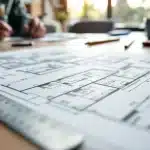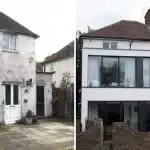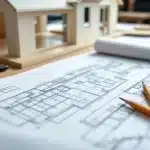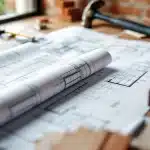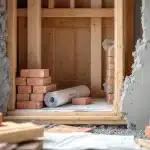How to Breathe New Life into Your 1950s Home
At Cameron Construction, we’ve seen countless 1950s homes transformed into modern marvels while preserving their unique charm.
1950s house renovation is an art that balances respect for the past with the demands of contemporary living. This blog post will guide you through the process of breathing new life into your mid-century home.
From assessing original features to reimagining key spaces, we’ll share our expertise to help you create a home that honours its history while meeting your current needs.
What’s Worth Keeping in Your 1950s Home?
Spotting Valuable Original Features
A 1950s home renovation resembles the discovery of a time capsule. Countless mid-century gems hide beneath outdated fixtures and peeling wallpaper. The challenge lies in identifying elements to preserve and those to update.
Start your assessment by searching for era-defining features. Hardwood floors (especially those in good condition) deserve preservation. These can be refinished to restore their original lustre. Built-in cabinetry, often found in dining rooms or studies, adds character and storage. Don’t overlook original door hardware or light fixtures – these small details can anchor your home’s vintage appeal.
Structural Checks and Necessary Updates
Focus on the bones of your house next. Hire a professional inspector to assess the foundation, roof, and major systems. 1950s homes often require electrical upgrades to handle modern appliances and tech. The National Association of Home Builders reports that homes of this era typically have 60-amp service, while today’s standard is 200 amps.
Plumbing presents another concern. Many 1950s homes still have their original pipes, which may approach the end of their lifespan. Cast iron pipes typically last less than 50 years. If your home hasn’t undergone a plumbing overhaul, it likely needs one.
Setting Realistic Goals and Budgets
Establish clear goals before you start renovations. Do you want a faithful restoration or a modern interpretation of mid-century style? Your budget will largely dictate your approach. The 2021 Cost vs. Value Report by Remodelling Magazine shows that a major kitchen remodel in the Pacific region averages $72,513, while a bathroom remodel costs about $24,424.
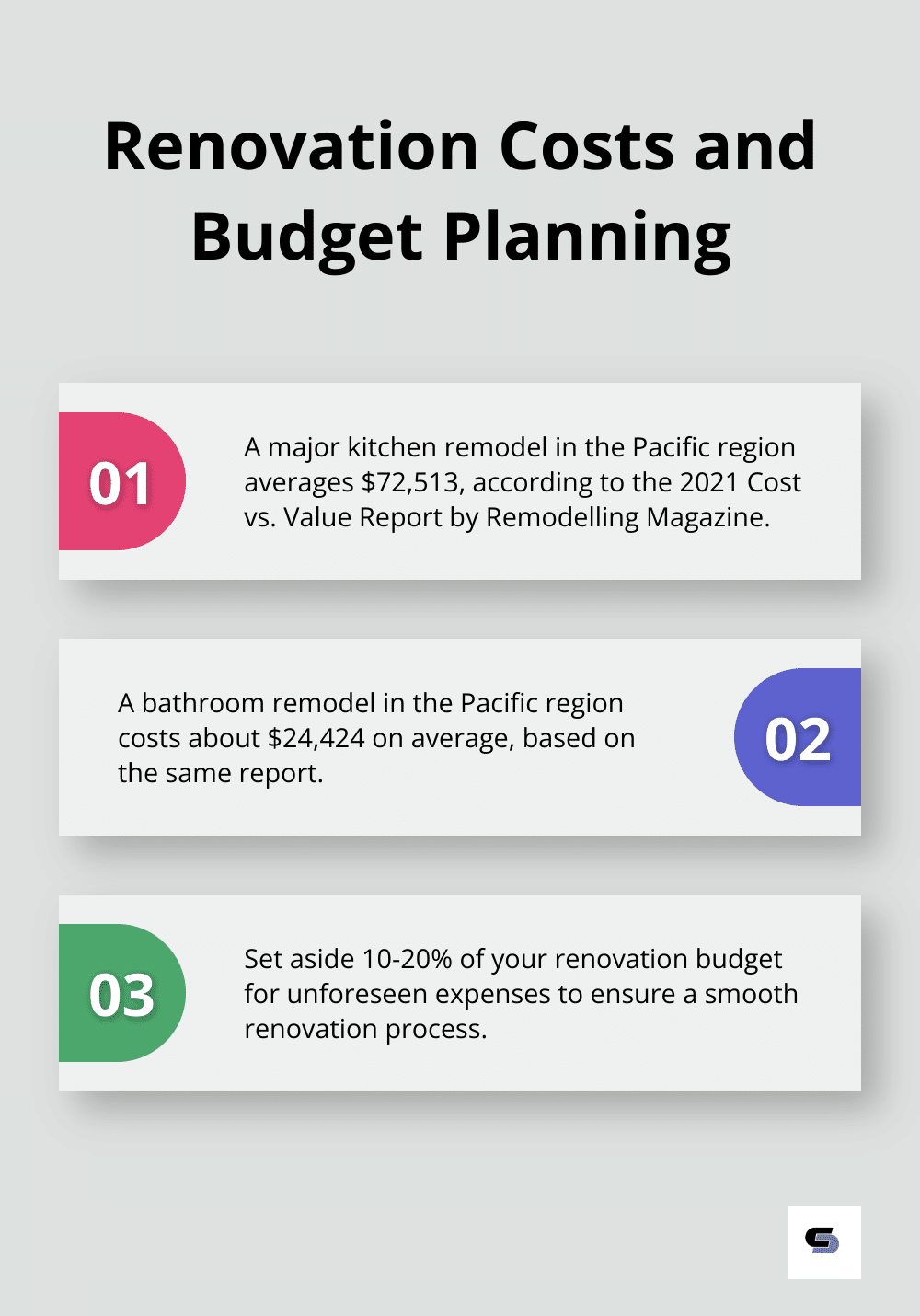
Unexpected issues often arise in older homes. Set aside 10-20% of your budget for unforeseen expenses. This buffer can make the difference between a smooth renovation and a stressful one.
Preserving Mid-Century Character
As you plan your renovation, consider ways to maintain the unique charm of your 1950s home. Original architectural details (like exposed beams or decorative mouldings) can become focal points in your updated space. Try to incorporate vintage elements into your modern design. For example, a restored 1950s refrigerator can add a pop of retro charm to an otherwise contemporary kitchen.
The next step in your renovation journey involves modernizing your 1950s home without losing its essential mid-century character. This balance of old and new will create a space that’s both functional for today’s lifestyle and respectful of its architectural heritage.
How to Modernize Your 1950s Home Without Losing Its Charm
At Cameron Construction, we understand the delicate balance of updating a 1950s home while preserving its mid-century character. Our focus on key areas dramatically improves functionality without sacrificing the unique appeal of these architectural gems.
Upgrade Your Electrical System
Most 1950s homes were built with 60-amp electrical service, which falls short for today’s tech-heavy households. An upgrade to 200-amp service is essential. This upgrade involves replacing the electrical panel and potentially rewiring parts of your home. It’s a critical safety improvement that also allows for modern appliances and electrification updates.
Don’t overlook outlets. The typical 1950s home has far fewer outlets than we need today. Add earth leakage circuit interrupter (ELCI) outlets in kitchens and bathrooms for safety. Consider installing USB outlets in bedrooms and living areas for convenient device charging.
Modernize Your Plumbing
If your home still has its original plumbing, it’s time for an overhaul. Cast iron pipes, common in 1950s construction, typically last about 50 years. Replace these with modern PVC or copper piping to improve water pressure and prevent leaks.
Try water-saving fixtures while you’re at it. Low-flow toilets can reduce water used for toilets by 20 to 60 percent. Modern showerheads and faucet aerators further reduce water consumption without sacrificing pressure.

Boost Energy Efficiency
Improving your home’s energy efficiency reduces your carbon footprint and saves you money. Start with insulation. Many 1950s homes have inadequate insulation by today’s standards. Adding insulation to your attic can save on heating and cooling costs.
Windows are another key area for improvement. Single-pane windows, common in 1950s homes, leak energy. Replace them with double-pane, low-E windows to cut energy loss. While not cheap, the long-term savings are substantial.
Enhance Your Lighting
Poor lighting can make even the most stylish mid-century home feel dark and dated. Luckily, you can make big improvements without breaking the bank.
Start by maximising natural light. If possible, enlarge existing windows or add new ones. Skylights can bring light into interior rooms that lack windows. For artificial lighting, use a layered approach. Combine ambient lighting (like recessed lights) with task lighting (under-cabinet lights in the kitchen) and accent lighting (to highlight architectural features).
LED bulbs are a must. They use less energy than incandescent bulbs and last longer. Plus, they come in a range of colour temperatures, allowing you to create the perfect ambiance in each room.
Modernising your 1950s home doesn’t mean erasing its character. By focusing on these key areas, you create a home that’s efficient and comfortable while staying true to its mid-century roots. Now that we’ve covered the essential updates, let’s explore how to reimagine your living spaces to suit modern lifestyles while honouring the home’s original design intent.
Reimagining Your 1950s Home for Modern Living
At Cameron Construction, we transform 1950s homes into functional, modern spaces while preserving their mid-century charm. Here’s how you can reimagine key areas of your home to suit contemporary lifestyles.
Open Floor Plans: Space and Character in Balance
Open-plan layouts are celebrated features of post-war and mid-century homes, along with expansive windows and seamless indoor-outdoor connections. However, knocking down walls isn’t always the answer. Consult a structural engineer before removing any wall to ensure it’s not load-bearing.

Create strategic openings between rooms instead of full demolition. A pass-through between the kitchen and dining room can improve flow without sacrificing the home’s original layout. Widening doorways can dramatically increase the sense of openness without major structural changes.
If you choose a more open concept, preserve elements that define the original spaces. Retain ceiling beams or use different flooring materials to subtly delineate areas within the open plan. This approach maintains the home’s character while improving functionality.
Kitchen Transformations: Old Meets New
Updating a 1950s kitchen requires a delicate balance between modern convenience and retro charm. Assess which original elements are worth keeping. Well-maintained cabinetry can often be refaced rather than replaced (saving money and preserving character).
For benchtops, consider materials that evoke the era while offering modern durability. Quartz with a terrazzo-inspired pattern provides a nod to mid-century design with superior performance.
Pastel coloured refrigerators and stoves with chrome accents can transport you to the 1950s while hiding smart features and energy efficient designs.
Don’t overlook lighting in your kitchen update. Under-cabinet LED strips can significantly brighten work areas without altering the room’s overall look. Pendant lights over an island or breakfast nook can serve as both functional lighting and a design statement.
Bathroom Updates: Vintage and Modern Mix
Bathrooms in 1950s homes are often small by today’s standards, but clever design can maximise space and functionality. If original tiles are in good condition, keep them and build your design around their colour scheme. This approach saves on demolition costs and maintains authenticity.
For a space-saving update, replace an old vanity with a wall-mounted sink. This creates the illusion of more floor space and aligns with mid-century modern aesthetics. Add storage with a medicine cabinet that matches the era’s style.
Shower updates can significantly impact both function and style. Replace old shower curtains with glass doors to visually expand the space. For a bathtub-shower combo, consider a frameless glass panel instead of a full enclosure. This modern touch complements the vintage tub while improving usability.
Storage Solutions: Maximising Space
1950s homes often lack the storage space modern families need. Try built-in shelving units that blend seamlessly with the home’s architecture. Custom closet systems can maximise storage in smaller bedrooms. In the kitchen, pull-out pantry shelves and lazy Susans make use of every inch of cabinet space.
Final Thoughts
A 1950s house renovation blends nostalgia with modern living. It honours the past while embracing the future. Successful renovations require a balance between preserving character and implementing necessary updates.
Professional expertise helps navigate the complexities of period renovations. We at Cameron Construction bring decades of experience to every project. Our team creates tailored solutions that increase both comfort and value.
A well-executed 1950s house renovation updates more than just an old property. It breathes new life into a piece of history, creating a functional, beautiful, and uniquely personal living space. With proper planning and guidance, your mid-century home can become a modern masterpiece.


